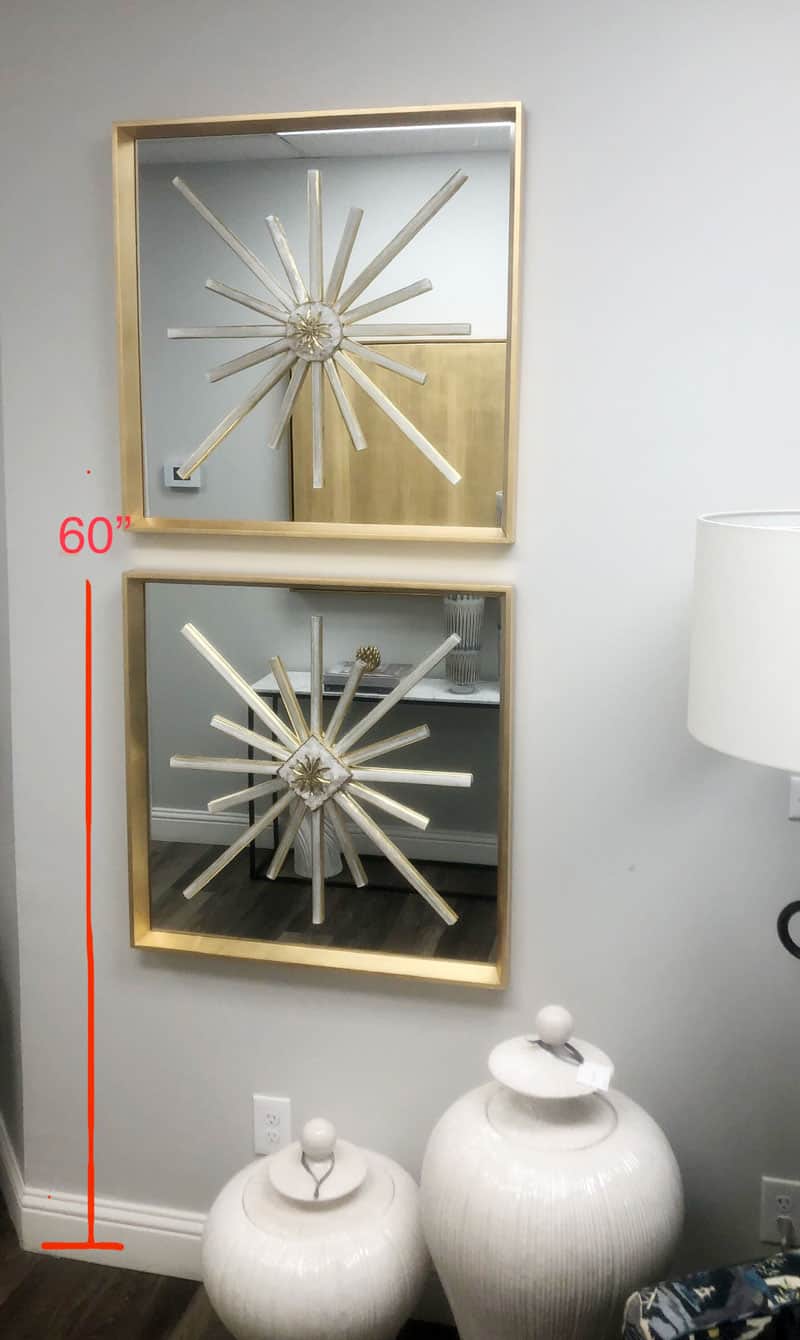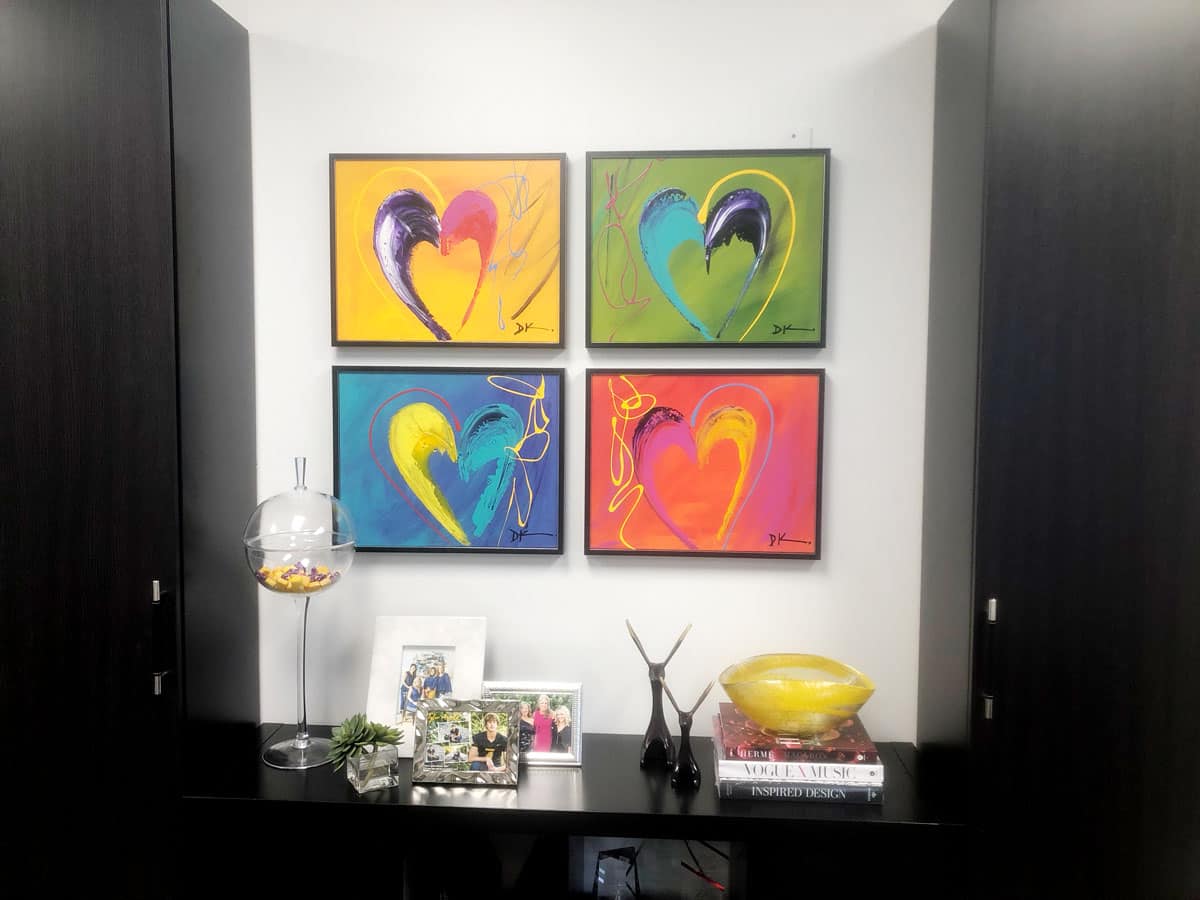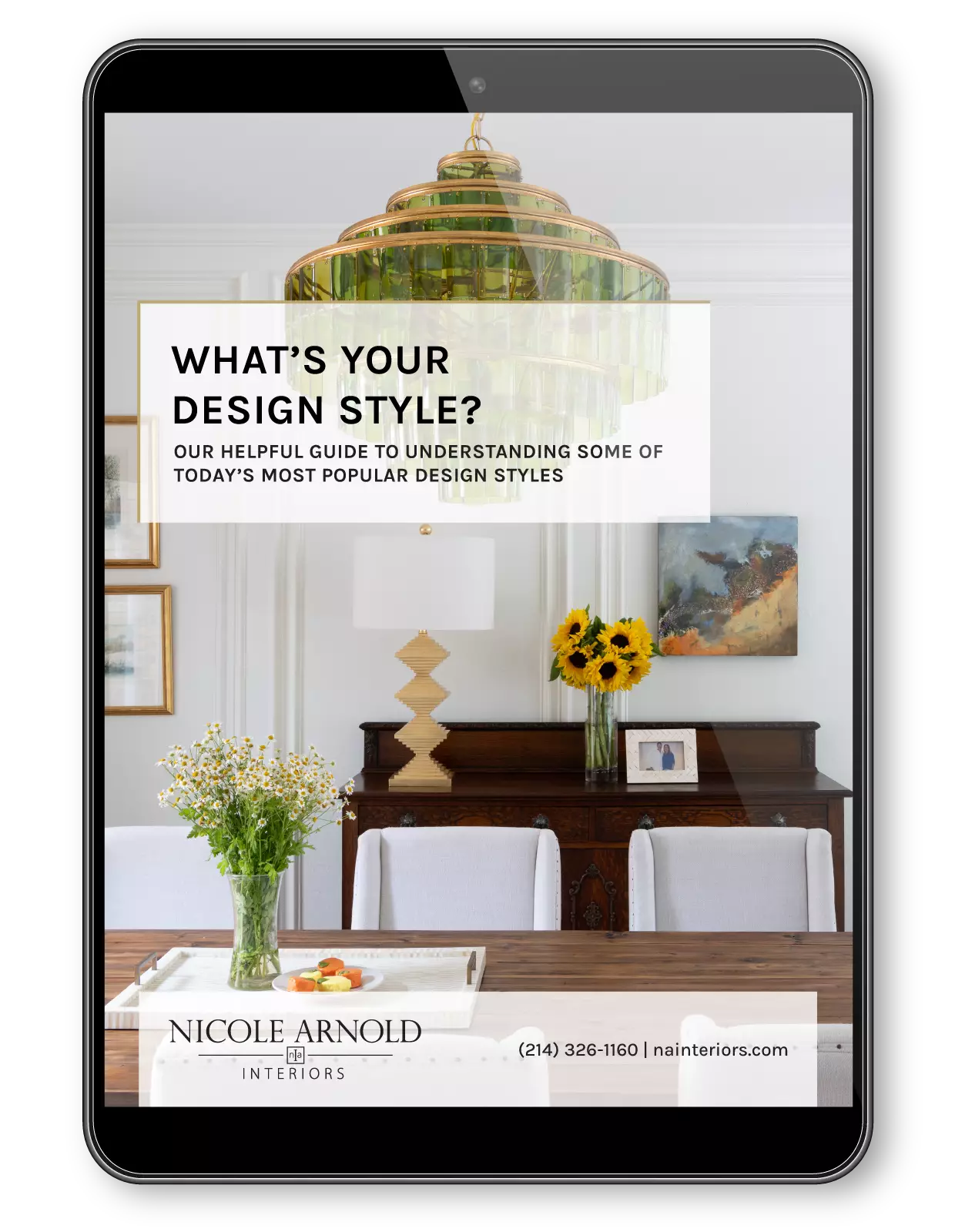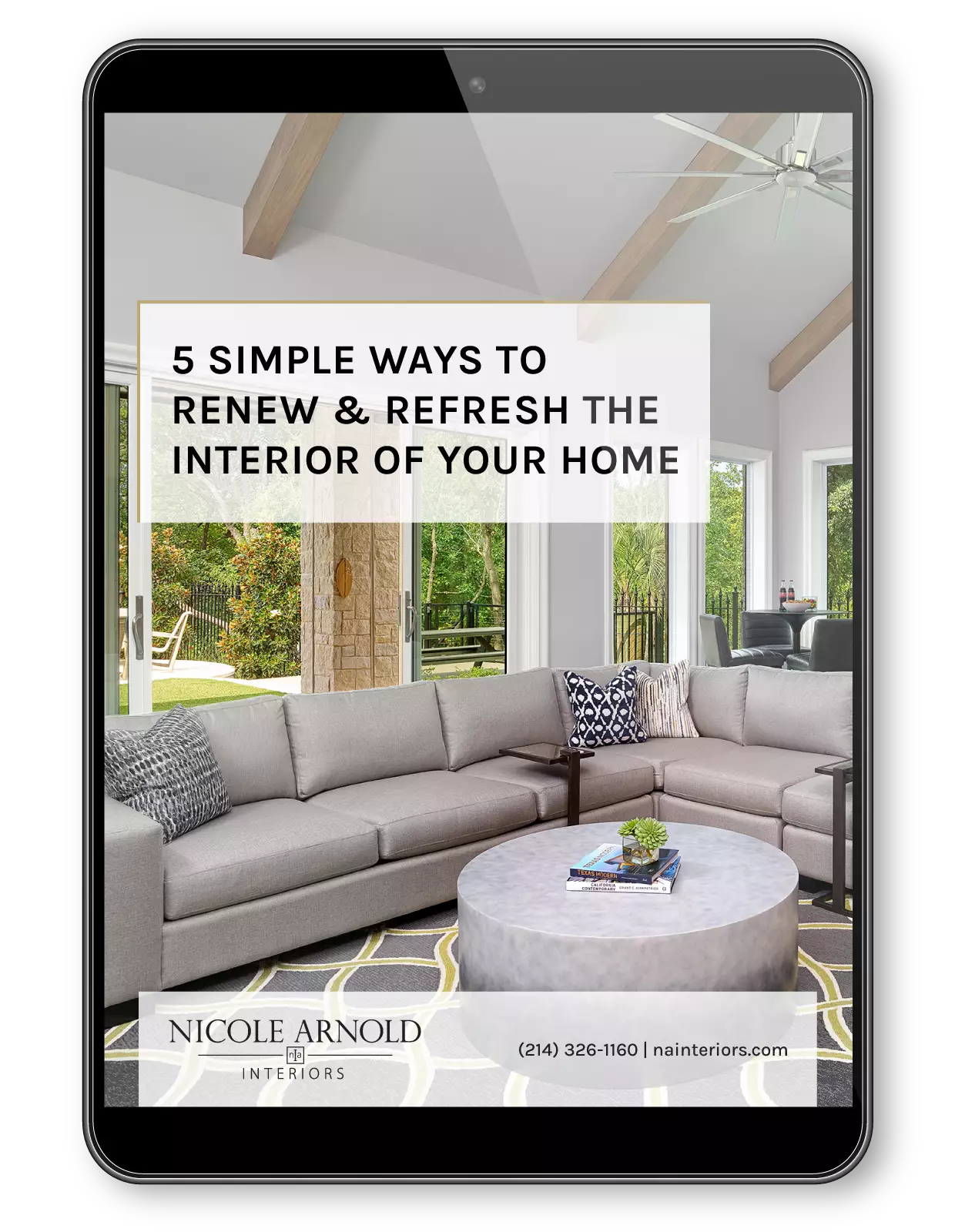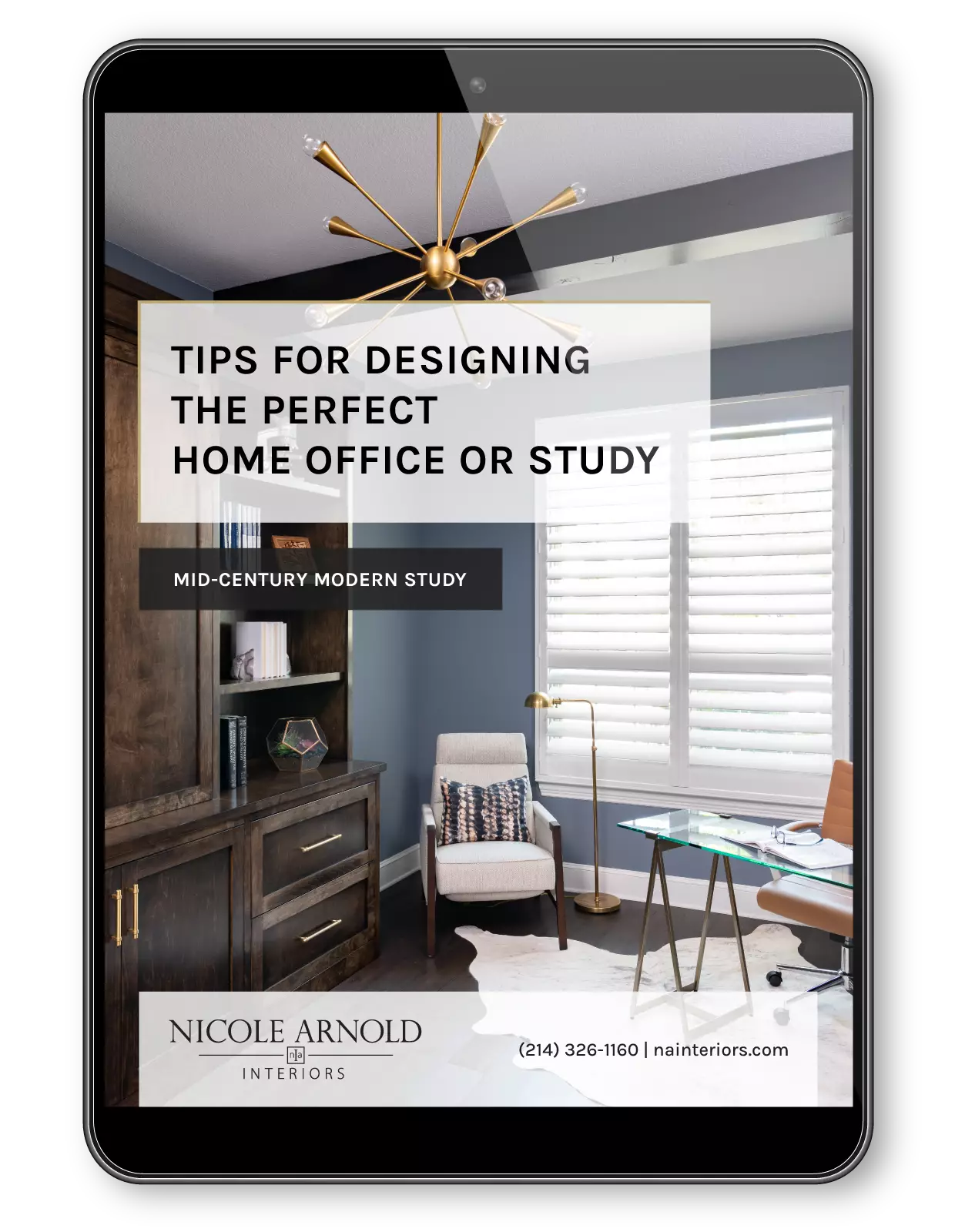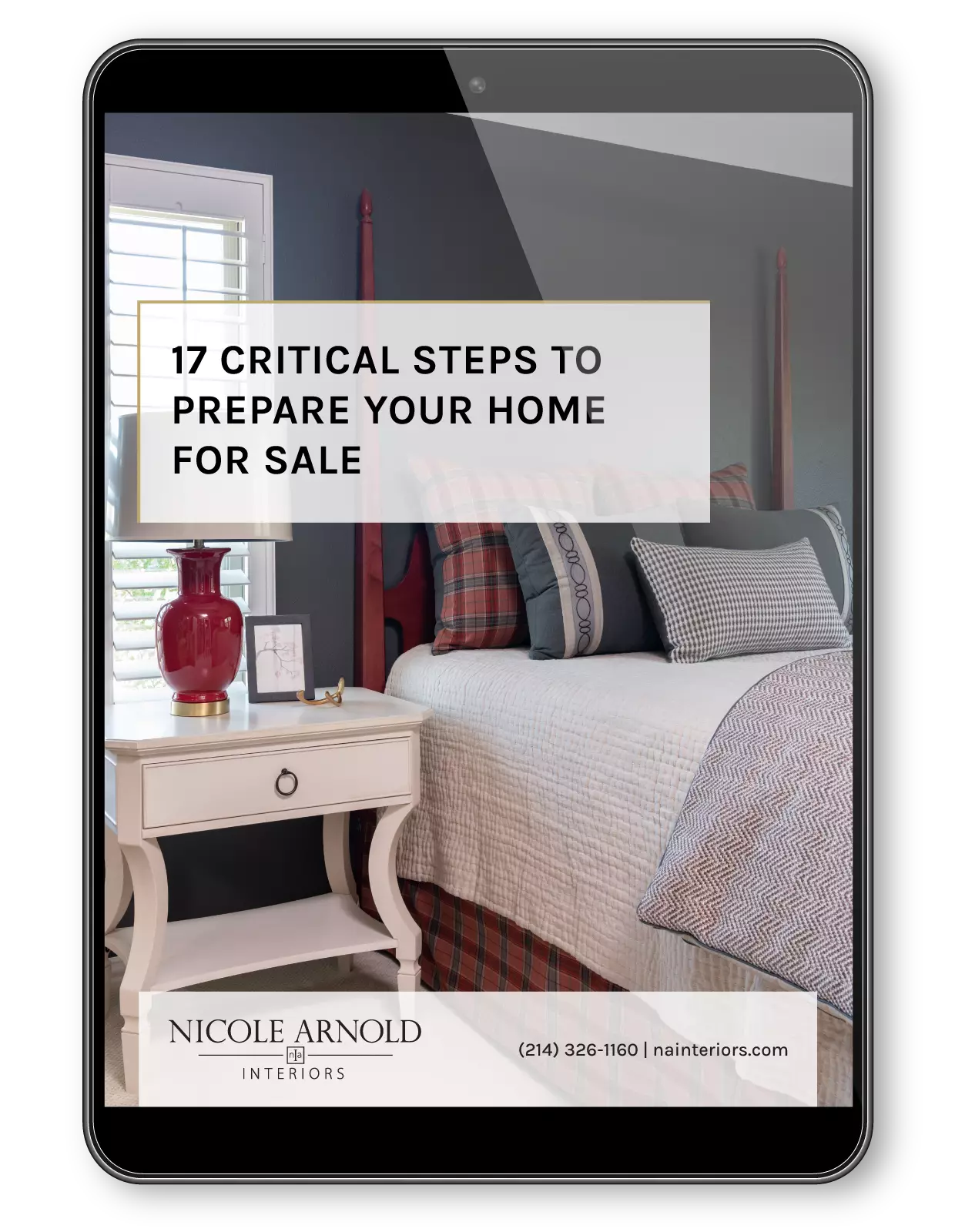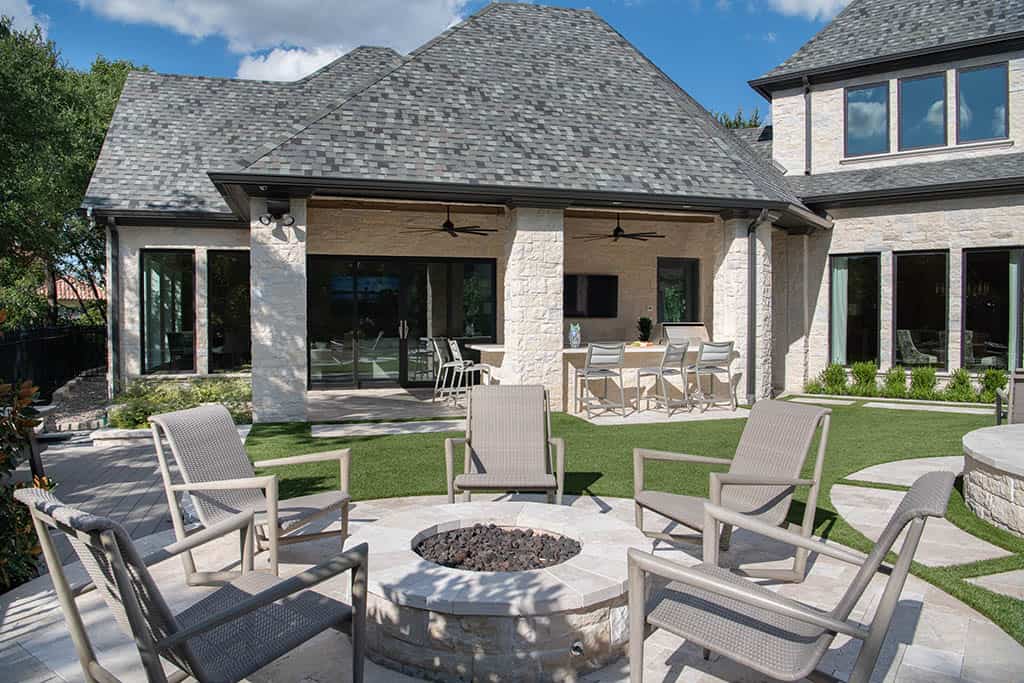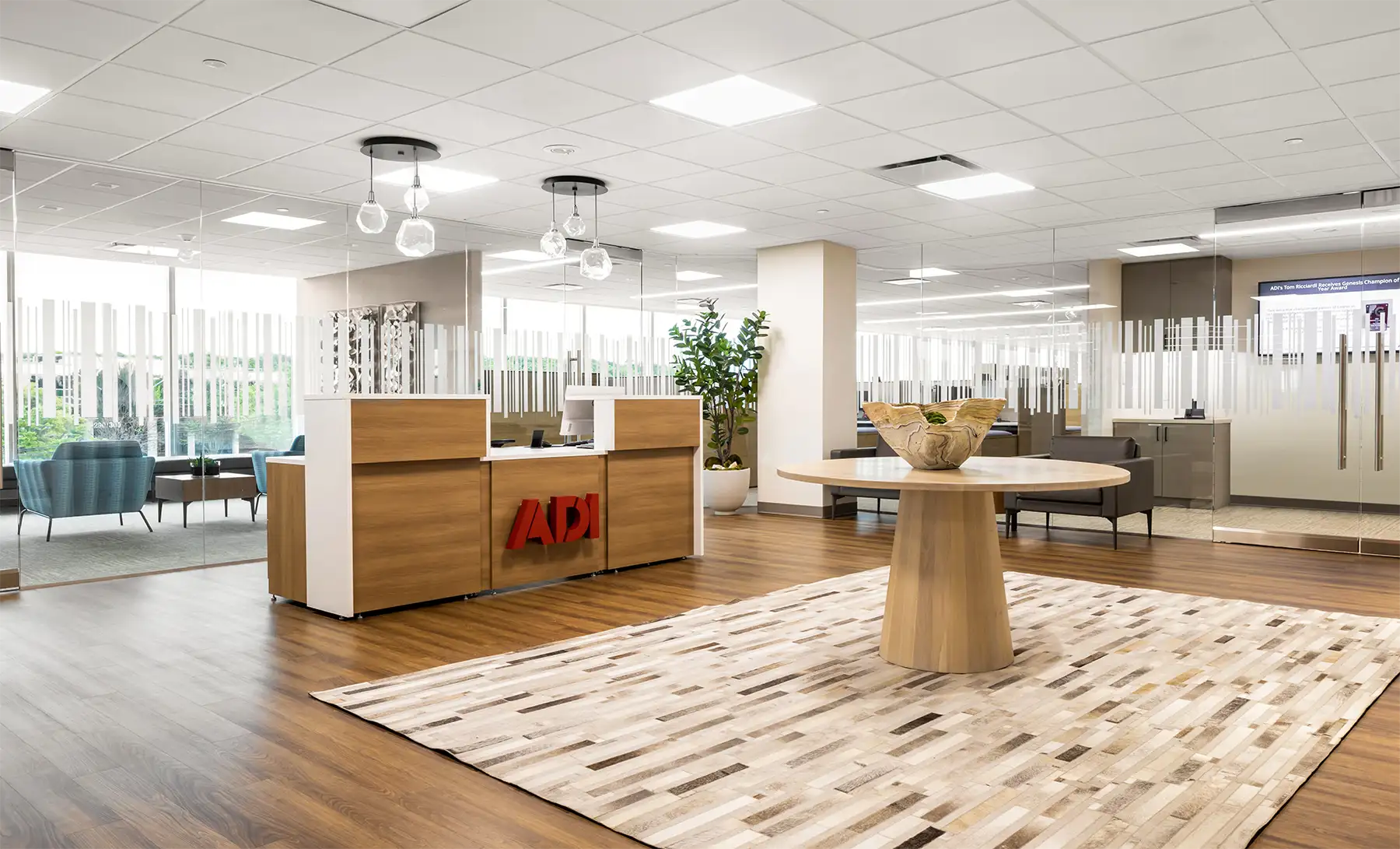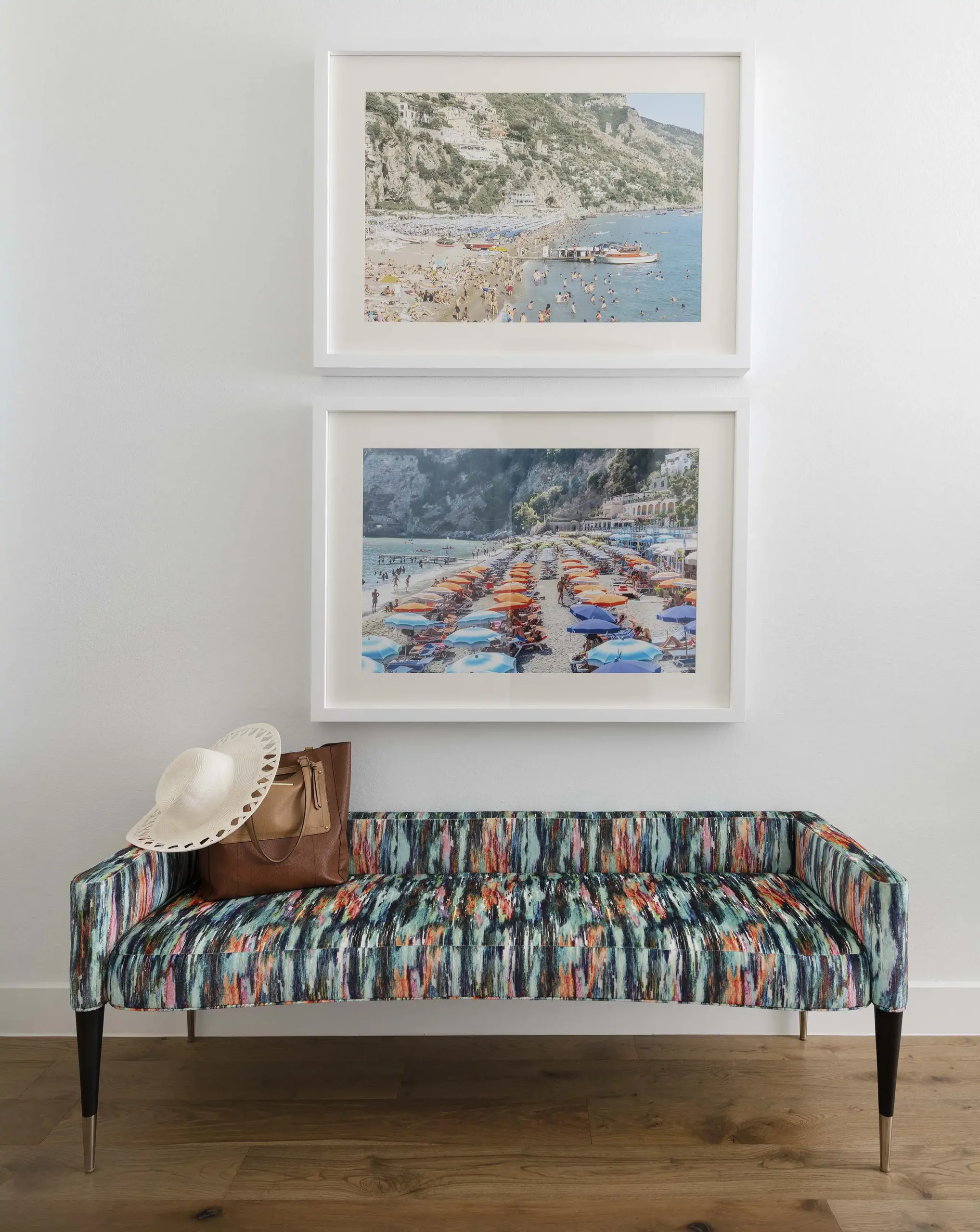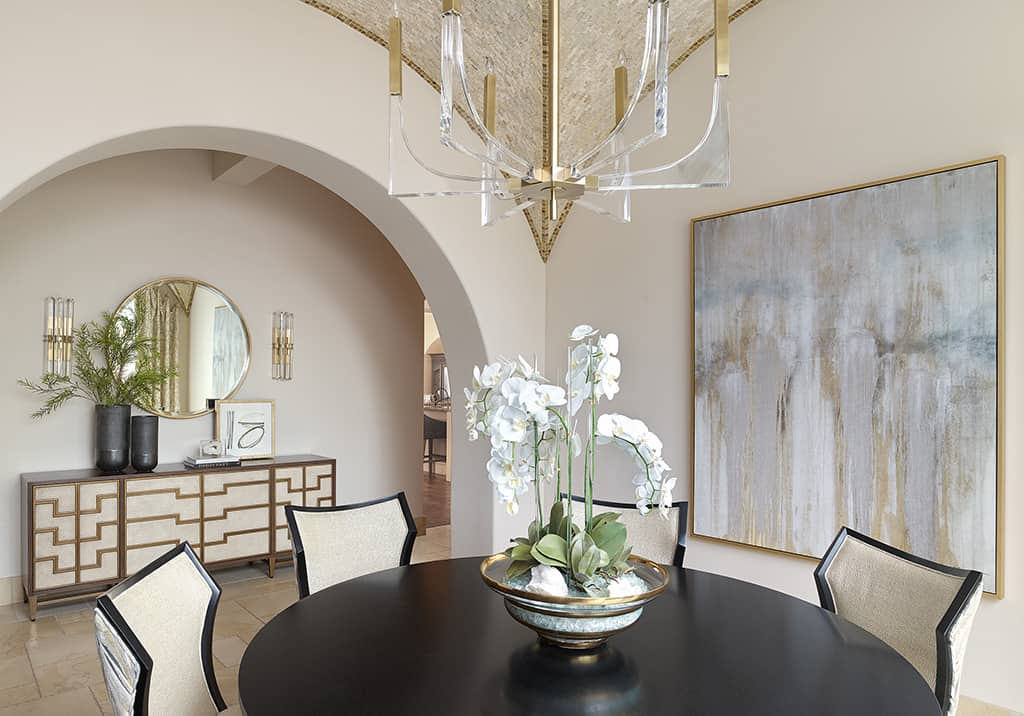Finding the right art for your space is hard, but hanging art correctly can be even more difficult
In fact, hanging artwork incorrectly or at the wrong height is one of the most common design mistakes we see.
So I’ve got a tip that will help you never mess it up that has served me well for years. It’s simple. Feel free to adapt it. Here it is: hang anything you like, any size you like, but keep the “rule of 60”.
Hanging art can be an intimidating task, but following this simple guideline can make featuring your favorites a lot easier!
How to Hang Artwork Correctly
While that might sound a little confusing, we promise it’s easy! Here’s an example:
- Picture is 20″ tall
- Middle is at 10″ (this mid point should rest at 60″ from the floor)
- Wire comes to 2″ below the top
- 10″ – 2″ = 8″
- Lightly mark 8″ above your first mark or 68″ on the wall
- Hang up your art!
Though this may seem complicated to read, it is quite simple when you do it. The thing to always remember is that the center of all your pictures should be hanging at the same 60″, and you are just figuring out where the hook goes above it.
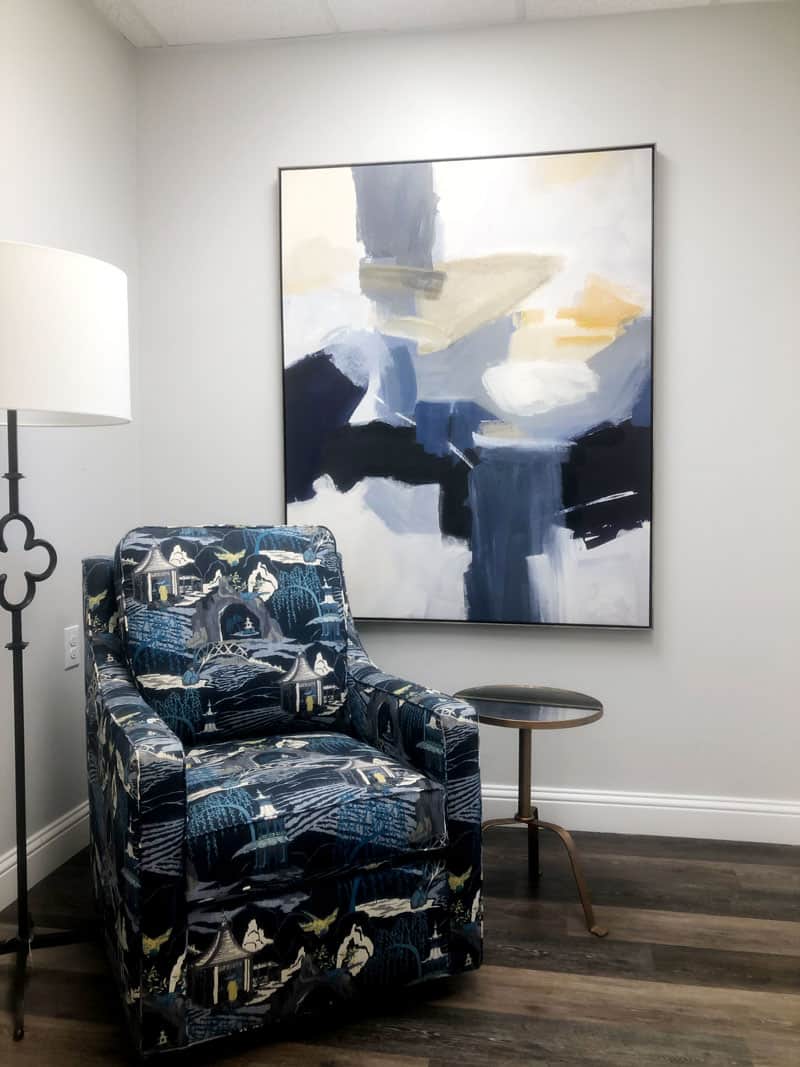
Whether placing a single piece, a diptych (which is a set of 2 pieces) or a grouping of many pieces, a fail-safe method is to keep the vertical center at 60” above the floor.
This is considered eye-level for most people and an ideal way to most appreciate your artwork!
